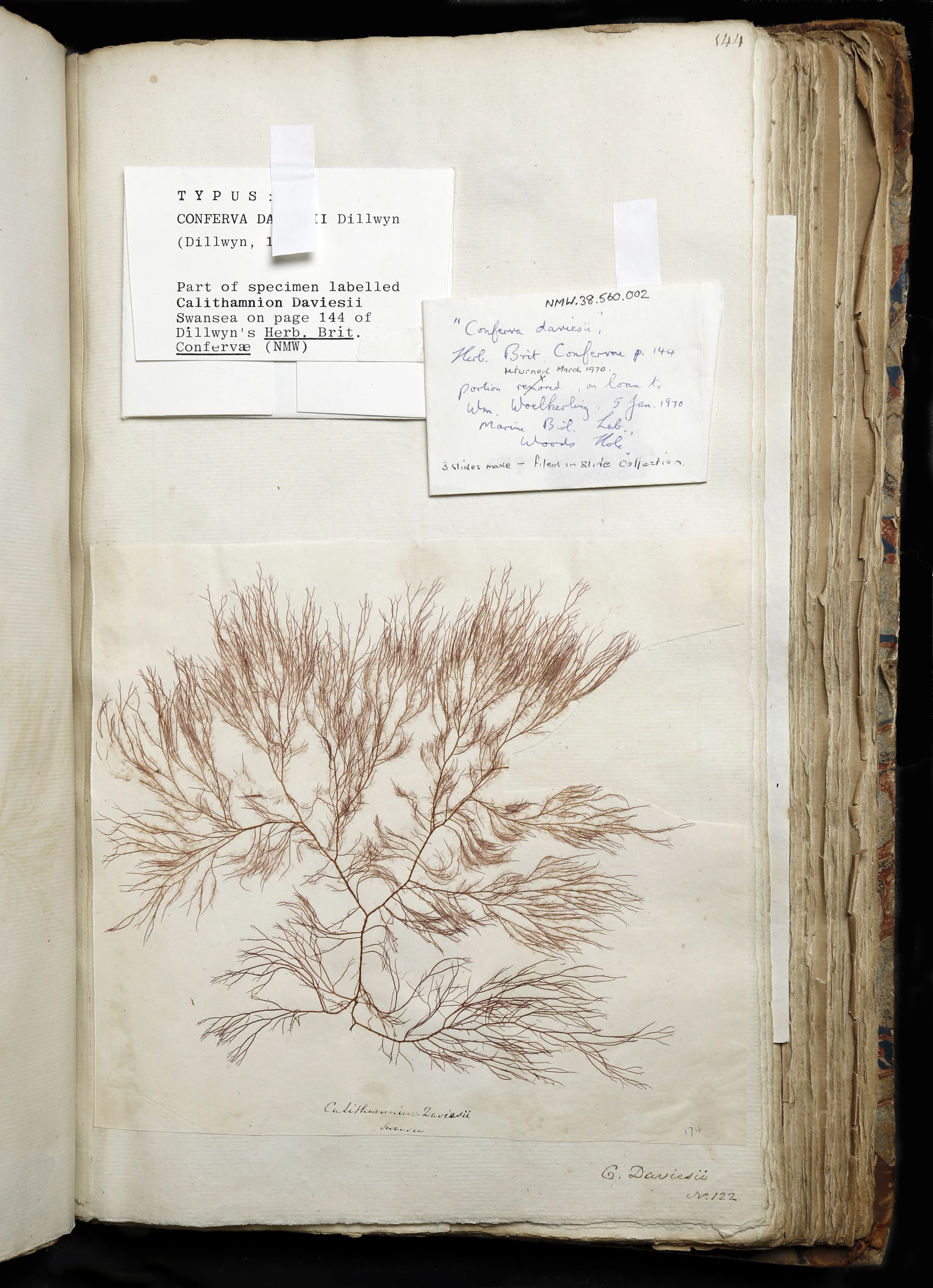Stories from Pressed Plant Books in the Botany Collections
, 17 Mai 2019
Within Amgueddfa Cymru’s botany collections are books of dried plant specimens created by scientists and enthusiasts. Each specimen has been carefully dried and pressed, before being added to the books, sometimes with handwritten or printed notes alongside. The books are of enormous importance both in terms of modern scientific research into climate change and biodiversity, and as a way to see first hand the history of botanical exploration.
You can now look through a catalogue of the 36 books that contain non-flowering plants, fungi, lichens and seaweeds. You can read about a few of the stories surrounding these books below. For more detailed information about each book, please visit the website.
These books show the changes in how we collect, classify and name plants over two centuries from 1800 to present day. An old volume which probably dates from the 19th century entitled “New Zealand Mosses”, contains more than just mosses. Lichens, algae and even some pressed hydrozoans (tiny marine animals) have been included by the unknown collector who chose to group these superficially similar ‘moss-like’ specimens together. This donation entered the Museum’s collections after its Royal Charter was received and before work had begun on the present Cathays Park building.
While the earliest currently known non-flowering plant specimen in the Museum is a moss collected in 1794 from Gwynedd, the earliest specimen book dates from 1803. This book is Lewis Weston Dillwyn’s personal collection of seaweed and freshwater algae collected between 1803 and 1809. Dillwyn’s specimen book was donated to the Museum in 1938 by the National Library of Wales, and has great importance both scientifically and historically.
Lewis Weston was part of the influential Dillwyn family, and his son John Dillwyn Llewelyn became an early pioneer photographer. He was interested in the natural history that he saw in south Wales where he lived. This is reflected in his scientific research as well as in the pottery designs created while he was owner of Cambrian Pottery. Dillwyn described new species of algae and his specimen book contains type specimens (irreplaceable specimens used in the original description of a species). The book is a personal record of his scientific life, recording places he visited and scientists who sent him specimens. He became a Fellow of the Royal Society in 1804 and later had a plant genus named after him in recognition of his work.
Many of the botanical specimen books in National Museum Cardiff have a fascinating history. Two contain mosses collected by Thomas Drummond on the Second Overland Arctic expedition between 1825 and 1827 to British North America (now Canada). Delving further into the book’s background reveals that the Captain, Sir John Franklin, sent Drummond to the Rocky Mountains with one Native American hunter. After the hunter left him on his own, he survived a severe winter, being mauled by a bear, and starvation. He still managed to collect, preserve and study many new plants of the North American continent. This work was published by Sir W.J. Hooker, who later became the director of the Royal Botanic Gardens, Kew.
The more recent books are systematically collected specimens known as ‘exsiccatae’. These are sets of duplicate specimens distributed by scientists to other museums. They help to spread the risk of losing a particularly important set of specimens, and to allow scientists around the world to study them. Lists of their contents are usually published in a journal or online. Much of the Berlin Herbarium and the botanical specimens within it was destroyed in World War 2, however many duplicate specimens from this collection survive in other herbaria around the world. From around the 1900s, exsiccatae changed from being bound books to being loose specimens. This meant museums receiving them could incorporate them into their collections alongside other closely related specimens for easier access and comparison.

